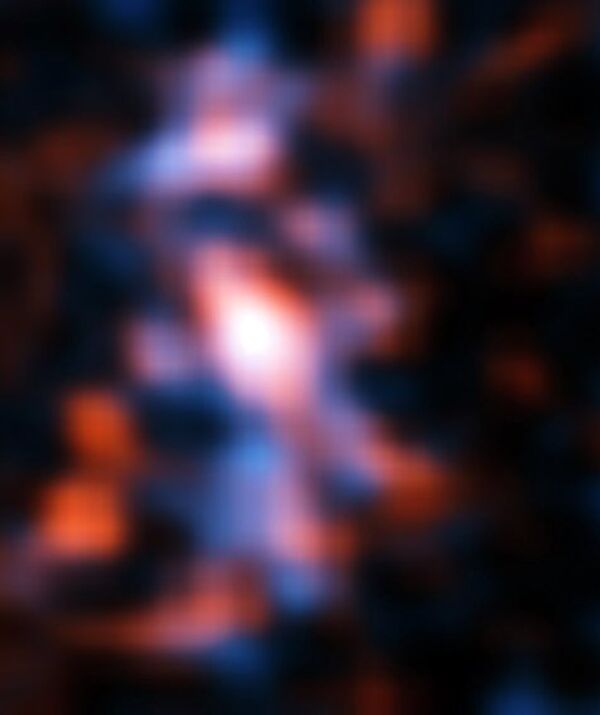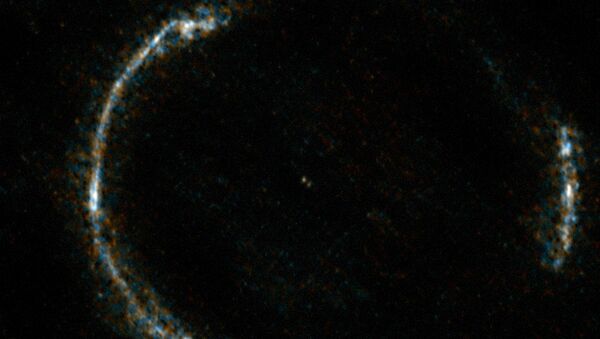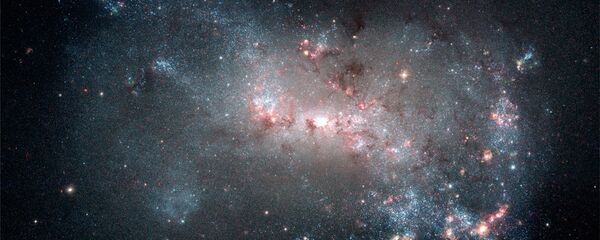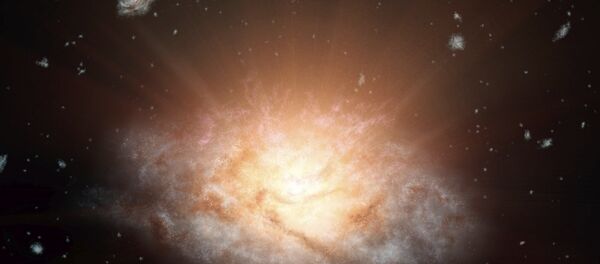The telescope, also known as an interferometer, is equipped with antennas which work together to collect light from near and distant objects in the universe. They act as a huge virtual telescope which is able to take images at a resolution up to six times higher than those taken in infrared with the Hubble Space Telescope.
Using ALMA, the astronomers at the observatory used the technique of gravitational lensing to study the galaxy, which is 11.7 billion light years from Earth.
A large galaxy located between SDP.81 and Earth was used by the astronomers as a lens to study the more distant body; this smaller galaxy magnified the light of its more distant relation and warped it. This effect is an example of "Einstein's Ring," a type of gravitational lens which bends the light from the object behind it.
"The ALMA image of the reconstructed galaxy is spectacular," said Rob Ivison, the ESO's Director for Science.

Alma was not able to detect the center of SDP.81; the astronomers suspect this is due to the presence of "a supermassive black hole more than 200–300 million times the mass of the Sun" in the smaller, closer galaxy which allowed SDP.81 to be reconstructed.
"ALMA's huge collecting area, the large separation of its antennas, and the stable atmosphere above the Atacama Desert all lead to exquisite detail in both images and spectra. That means that we get very sensitive observations, as well as information about how the different parts of the galaxy are moving. We can study galaxies at the other end of the Universe as they merge and create huge numbers of stars," explains Ivison.
The ALMA telescope is the most complex astronomical observatory ever built on Earth, construction of which was completed in 2014. The facility enables research into the physics of the cold Universe, the first stars and galaxies, and directly images the formation of planets.

Galaxy SDP.81 is seen by ALMA just 2.4 billion years after the Big Bang, when the Universe was only 15 percent of its current age. The smaller, closer galaxy which helped ALMA to model SDP.81 is four billion light years away from Earth; the light from SDP.81 took 11.4 billion years to reach Earth, more than twice the age of our planet.





